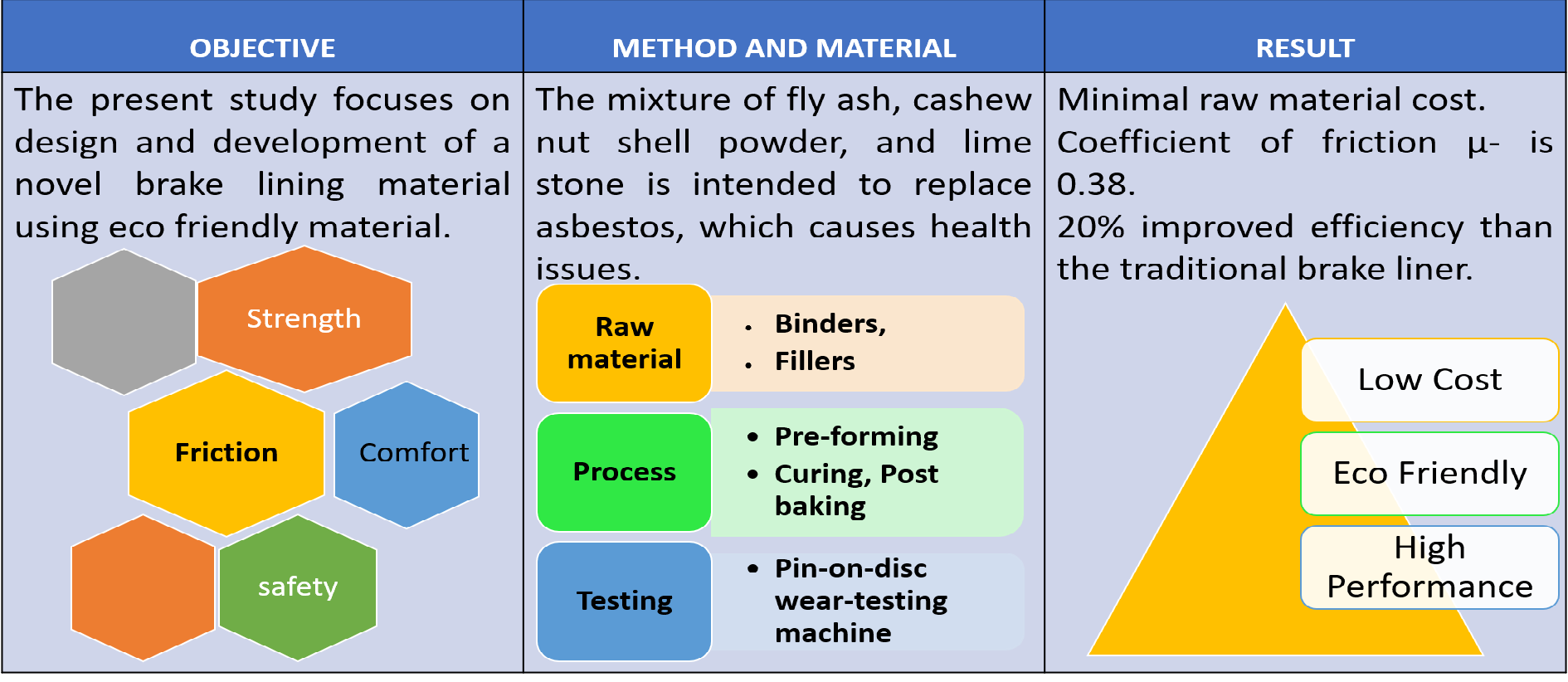 Open Access
Open Access
ARTICLE
Analysis of a Cashew Shell and Fly Ash Rich Brake Liner Composite Material
1 Department of Mechanical Engineering, Saveetha Engineering College, Chennai, Tamilnadu, India
2 Department of Mechatronics, Faculty of Engineering, Tishk International University, Erbil, Iraq
3 Department of Mechanical Engineering, Chouksey Engineering College, Bilaspur, Chhattisgarh
4 Department of Mechanical Engineering, Saveetha School of Engineering, SIMATS, Chennai, India
* Corresponding Authors: R. Selvam. Email: ,
(This article belongs to the Special Issue: Advances in Fluid Dynamics and Functional Materials)
Fluid Dynamics & Materials Processing 2023, 19(3), 569-577. https://doi.org/10.32604/fdmp.2022.022187
Received 12 November 2021; Accepted 12 April 2022; Issue published 29 September 2022
Abstract
Hybrid materials collected from organic and inorganic sources, which are traditionally used as brake lining materials, generally include fly ash, cashew shell powder, phenolic resins, aluminium wool, barites, lime powder, carbon powder and copper powder. The present research focuses on the specific effects produced by fly ash and aims to provide useful indications for the replacement of asbestos due to the health hazards caused by the related fibers. Furthermore, the financial implications related to the use of large-volume use of fly ash, lime stone and cashew shell powder, readily available in most countries in the world, are also discussed. It is shown that many manufacturing and automotive industries, which are currently experiencing difficulties in meeting the increasing demand for brake lining material, may take advantage from the proposed solution.Graphic Abstract

Keywords
Cite This Article
 Copyright © 2023 The Author(s). Published by Tech Science Press.
Copyright © 2023 The Author(s). Published by Tech Science Press.This work is licensed under a Creative Commons Attribution 4.0 International License , which permits unrestricted use, distribution, and reproduction in any medium, provided the original work is properly cited.


 Submit a Paper
Submit a Paper Propose a Special lssue
Propose a Special lssue View Full Text
View Full Text Download PDF
Download PDF Downloads
Downloads
 Citation Tools
Citation Tools
